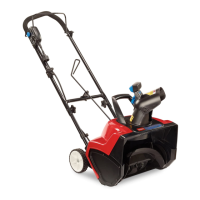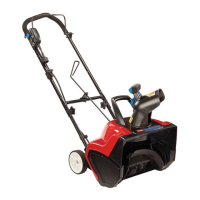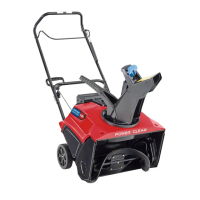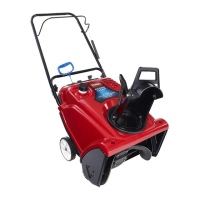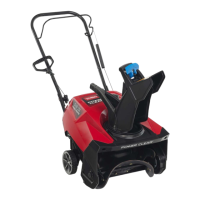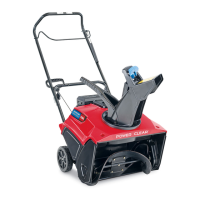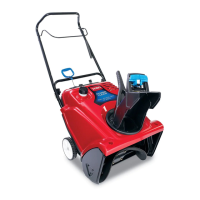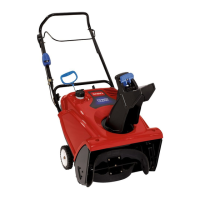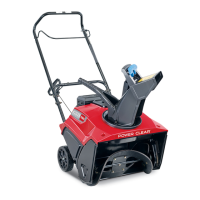Operation
EN-10
1
1516
Figure 9
1. Chute
deflector handle
POTENTIAL
HAZARD
• A gap between chute and chute deflector
will allow snow and anything that may be
picked up by snowthrower to fly in the
direction of the operator.
WHAT CAN HAPPEN
• Thrown objects could cause serious
personal injury.
HOW TO AV
OID THE HAZARD
• Do not force chute deflector too far forward
so a gap appears between the chute and
chute deflector.
• Do not over-tighten deflector mounting
nuts so excessive for
ce is required to adjust
deflector.
4. Begin snow removal near the electrical outlet
and work outward. Blow back and forth, not
away and toward outlet.
When turning at the end of a swath, step over the
cord and turn the snowthrower.
5. Always overlap each swath and dischar
ge snow
downwind when possible.
6. Shave down large banks of snow by placing the
snowthrower on the bank. Lift the snowthrower
by the primary and secondary handles only
(Fig. 10). Let the unit’s weight shave down the
bank in a back and forth motion.
1516
2
1
Figure 10
1. Primary
handle
2.
Secondary handle
7. When clearing steps or deep drifts, hold the unit
by the primary and secondary handles (Fig. 10)
and use a swinging or sweeping motion.
POTENTIAL HAZARD
• When using the secondary handle, never
direct snow discharge chute at operator or
bystanders. Foreign objects could be
thrown by snowthrower.
WHAT CAN HAPPEN
• Thrown objects could cause serious
personal injury.
HOW TO AV
OID THE HAZARD
• When using the secondary handle, always
turn the discharge chute in the opposite
direction from where you or bystanders are
standing.
